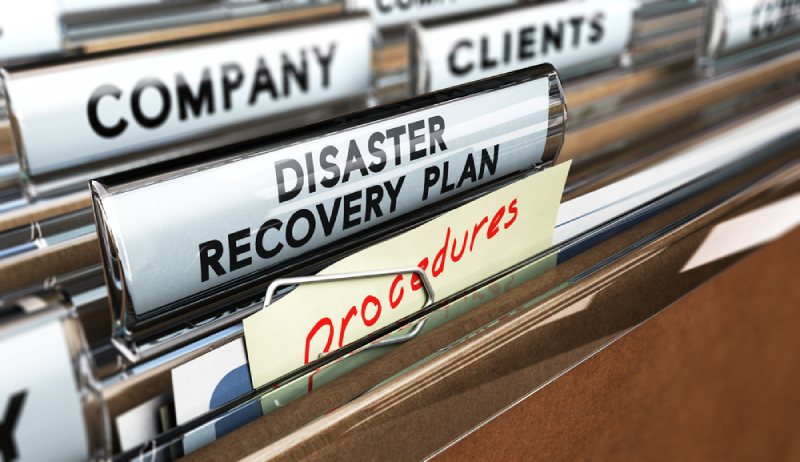The past year and a half has been stressful for everybody in East Coast. And I would argue it’s been doubly so for East Coast business owners.
The thing is though, these things happen. Quite regularly. Maybe not global pandemics, but disasters in general.
So, as the person in your corner who might be one of the only ones asking you these questions — What happens to your East Coast business if the building next door catches on fire? Are you prepared for the next hurricane, tornado, or hail storm?
Every business needs to prepare for these eventualities.
Do you have a plan?
If not, let’s get you one…
Buccigrossi and Associates’ Tips for Creating a Business Disaster Plan
“Remember, today is the tomorrow you worried about yesterday.” -Dale Carnegie
Every year, millions of new businesses are started across the country. Yes, millions. Unfortunately, a higher percentage of them will be out of business within five years.
Most businesses close due to issues such as a bad business plan, poor execution, and other controllable factors. But in a typical year — 2020 being an aberration — approximately 10% of businesses close due to a specific external event.
The unfortunate fact of the matter is that disasters can strike anywhere, any time. And this impacts businesses that aren’t prepared for it.
So how can you prepare?
Obviously, different business models call for different resources, but there are some generalities that apply to all businesses.
Business Disaster Plan Tip #1: Cash Is King
The first step is the most important: A business needs capital to operate, and while it’s easy to think you can simply bootstrap all the funding you’ll ever need if your ideal client can’t pay you, the money has to come from somewhere.
Enter cash reserves.
As a baseline, all businesses need at least three months of operating capital reserves available to them in cash or easily liquidated securities. These funds are earmarked only for emergencies and can be the difference between staying afloat while your business handles whatever disaster has befallen it.
At the same time, it’s important for you to understand two other important resources that can provide capital after a disaster. One is your insurance policy. Know what types of coverages you have, how to make a claim, and store copies of important policy documents away from the business location — such as scanned and uploaded to the cloud.
The second is to know what resources will likely be available to you from local, state, and federal government agencies, including FEMA and the SBA. Contact our local emergency management agencies to learn more about what resources — including possible grants and emergency loans — are usually made available after local disasters. Learning about this stuff now will better equip you to navigate all the red tape later.
Business Disaster Plan Tip #2: Know Your Customer
The events of the past year will be studied for generations due to the impact the pandemic has had on businesses of all sizes. While many companies were forced to shutter their operations, other businesses were able to shift their operations into new markets and actually grow business while the economy shrank. In addition, many new businesses were started, as crazy as that sounds.
The lesson here is simple: You must know your customer. This is critical for being able to survive a disaster situation. By knowing and understanding your customers, you’ll be prepared to do what is necessary to shift your operations to continue serving them.
For example, a restaurant might be forced to close their dining room, but can they still handle take-out orders? Or, for example, could that restaurant cater meals for first responders, even if they couldn’t be open to the general public?
OK, in light of recent events, maybe that’s the too-obvious example.
So, how about a factory? Can production be shifted from one product line to another to meet the needs of the changing business climate? OK, maybe this is obvious, too, as some businesses were able to quickly shift production to make ventilators, masks, and hand sanitizer last year.
Take the time now to learn more about your customers. Find out how they would respond in certain situations. Learn about what kind of support, products, and services they need and how their consumption changes during a disaster situation.
Business Disaster Plan Tip #3: Secure Your Supply Chain
It’s also important to understand how your suppliers will fare in a disaster. If you rely solely on one supplier for a key item, and that supply line is upset, your business could be forced to close. A far better plan is to foster relationships with multiple suppliers to ensure there are no challenges to you. Remember when the Suez Canal was closed this spring? While this wasn’t a “disaster” in the traditional sense of the word, it created challenges for many companies that relied too heavily on only one means of bringing in supplies.
At the same time, it’s also wise to know how your suppliers plan on dealing with disasters, too. What type of situations could affect them (which are different from what can affect you) due to location? Will they shut down a production line themselves – or shift production to other products? Where does that leave you, and what will you do about it?
If you’re scratching your head on any of these questions, that’s OK. That’s the whole point of a planning exercise like this — to make you dig deep and find the answers now, rather than after disaster strikes.
Business Disaster Plan Tip #4: Creating The Plan
Common sense would dictate that no one can create a plan to handily cover all disasters – in the last year, we’ve seen monstrous wildfires, cities torn apart by riots, a global pandemic, and transportation and supply line disruptions.
Every one of them impacts somebody’s business, and a hurricane offers a far different “type” of disaster than a localized riot. Any disaster plan simply starts with asking “What if?” and beginning to think about what could be done in such an event.
The next step is simple though: Begin to write it down and document it, step by step. Share it with your team, share it with your suppliers, and even your customers. More importantly, don’t stop refining it and amending it. We already see all the craziness on the news, so put your own business in those scenarios and create a solution to defend your company against it. Do you go virtual? Do you change your sales model? Do you relocate? Do you pivot?
All these are options and having a disaster response plan sussed out well in advance is the best way to ensure your East Coast company’s survival. It’s just like insurance: You hope you never need it, but it sure is handy when you do.
Need help assessing how to respond to common disaster situations? Want to bounce ideas off another East Coast business owner to help tweak your plan? Would you like to learn more about the financial resources, such as grants and loans, that might become available to us locally in the event of a disaster? Let’s chat about it:
To getting things done,
Buccigrossi and Associates
(412) 856-8799
Buccigrossi & Associates, LLC






